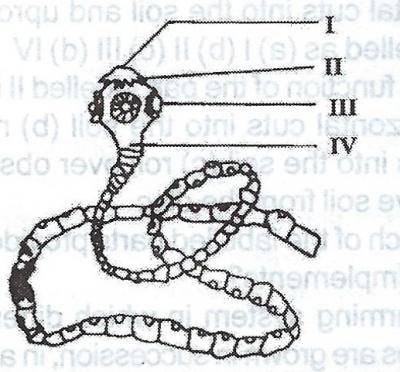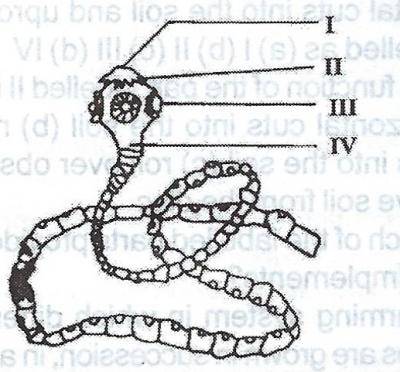Study specimens T (CHICKEN EGG) and U (TILIPIA FISH) and answer the following questions;
(a)i. Name three breeds of the farm animal which produces specimen T
(ii) State four ways in which specimen T is economically important
(b)(i) Mention two methods of harvesting specimen U, from the pond
(ii) List two by-products that could be obtained from the processing of specimen U
(iii) State four methods of preserving specimen U
Study specimens P (APHID),Q (COWPEA SEEDS) and R (COCONUT FRIUT)and answer the following questions;
(a) (i) State three effects of specimen P on crops
(ii) Mention two ways of controlling specimen Pl
(b)(i) Give two benefits of including the crop from which specimen Q was obtained in a mixed cropping system
(ii) Name the major storage pest of specimen Q
(c) State five uses of specimen R
(d) Give the botanical names of the crops from which specimens Q and R were obtained.
Study specimens I (WHEELBARROW), J (FILE), K (PALM OIL) and L (COTTON LINT) carefully and answer the following questions.
(a) (i) Give two uses each of specimens I and J
(ii) State two general ways of maintaining specimens I and J
(b) (i) Give the botanical names of the crops from which, each of specimens K and L were obtained
(ii) Outline the steps involved in the traditional method of producing specimen K
(a) Study specimen E (NPK 15:15:15, F (WOOD ASH), G (LIMESTONE), and H (COWDUNG) and answer the following questions.
(i) State three major nutrients supplied to crops by specimen E
(ii) List three methods that could be used to apply specimen E on a farm
(b) State three agricultural uses of each of specimens F and G
(c) Mention three ways in which specimen H is important to the soil
(a) Explain briefly each of the following economic concepts (i) scarcity (ii) scale of preference
(b) Give four reasons why agricultural insurance is important
(c) State five fishery regulations in West Africa
(d) Give five reasons why beekeeping is important
Discuss anthrax disease under the following headings (i) causal organism (ii) mode of transmission (iii) two symptoms (iv) two prevention and control measures
(b) (i) List four sources of plant protein in live stock feeds (ii) Give three examples of forage legumes that could be found in rangelands in West Africa
(c) Mention five characteristics of labour as a factor of agricultural production.
(a) Discuss maize smut disease under the follow-ing headings:
(i) causal organism (ii) mode of trans-mission (iii) two symptoms (iv) two cultural control measures
(b) Enumerate four forest management oractices in West Africa
(c) (i) State four classes of farm animals based on their uses (ii) Give one exam-ple of each class stated in (c)(i)
(a) Draw a well labelled diagram of the water cycle
(b) Mention two deficiency symptoms of phosphorus in crops
(c) Using the table below, classify the follow-ing insect-pests according to their modes of feeding (i) weevil (ii) locust (iii) scale insect (iv) armyworm (v) earworm (vi) cotton stainer (vii) green spidermites (viii) thrips (ix) capsids (x) yam beetle
(a) State five factors that should be considered in choosing an irrigation system in West Africa.
(b) Mention four problems associated with irrigation in West Africa
(c) A rectangle-shaped farmland has a length of 0.4 km and a breadth of 2,400 m, calculate the area of the farmland in hectares
(d) List one primary and three secondary tillage implements
(a) List five non-government agricultural organizations in West Africa.
(b) State four ways in which agriculture and industry are interrelated
(c) Give one function of each of the following parts of a disc plough
(i) disc (ii) beam (iii) furrow wheel (iv) disc scraper (v) hitch
(d) State four disadvantages of animal power
Agricultural extension teaching methods are classified on the basis of
- A. teaching materials
- B. topics to be taught
- C. attitude
- D. audience size
Which of the following agents is not involved in agricultural marketing?
- A. commodity boards
- B. money lenders
- C. retailers
- D. middlemen
|
Price of fruit (Le) |
Supply (No of baskets) |
Demand (No of baskets) |
| 1,000.00 | 10 | 60 |
| 2,000.00 | 20 | 50 |
| 3,000.00 | 30 | 40 |
| 4,000.00 | 40 | 30 |
| 5,000.00 | 50 | 20 |
| 6,000.00 | 60 | 10 |
At Le 1,000.00, what will be the excess demand over supply of mangoes?
- A. 50 baskets
- B. 40 baskets
- C. 20 baskets
- D. 10 baskets
Subsidies are given to farmers in the form of
- A. reduced prices of inputs
- B. provision of social infrastructure
- C. high tariff on imported inputs
- D. short term loans
The demand for agricultural produce is generally
- A. infinite
- B. inelastic
- C. unitary
- D. static
In fish farming, clarias is introduced to a pond stocked with Tilapia in order to
- A. regulate the population for Tilapia
- B. compete with Tilapia for feed
- C. check pests in the pond water
- D. regulate the turbidity of the pond water

The parasite illustrated above obtains nutrients from the host through
- A. osmosis
- B. diffusion
- C. capillarity
- D. egestion

The parts labelled I, II and III of the farm animal parasite above form the
- A. proglottide
- B. rostellum
- C. sucker
- D. scolex
The practice of mating closely related animals is called
- A. cross breeding
- B. hybridization
- C. in-breeding
- D. out-breeding
By-products of livestock used as feed ingredients in poultry ration include
- A. hides and hoofs
- B. blood and bones
- C. feathers and fur
- D. skin and bones
A farmer collects 800 eggs from a laying stock of 1,200 birds per day. Determine the laying percentage of the birds
- A. 150%
- B. 67%
- C. 50%
- D. 33%


